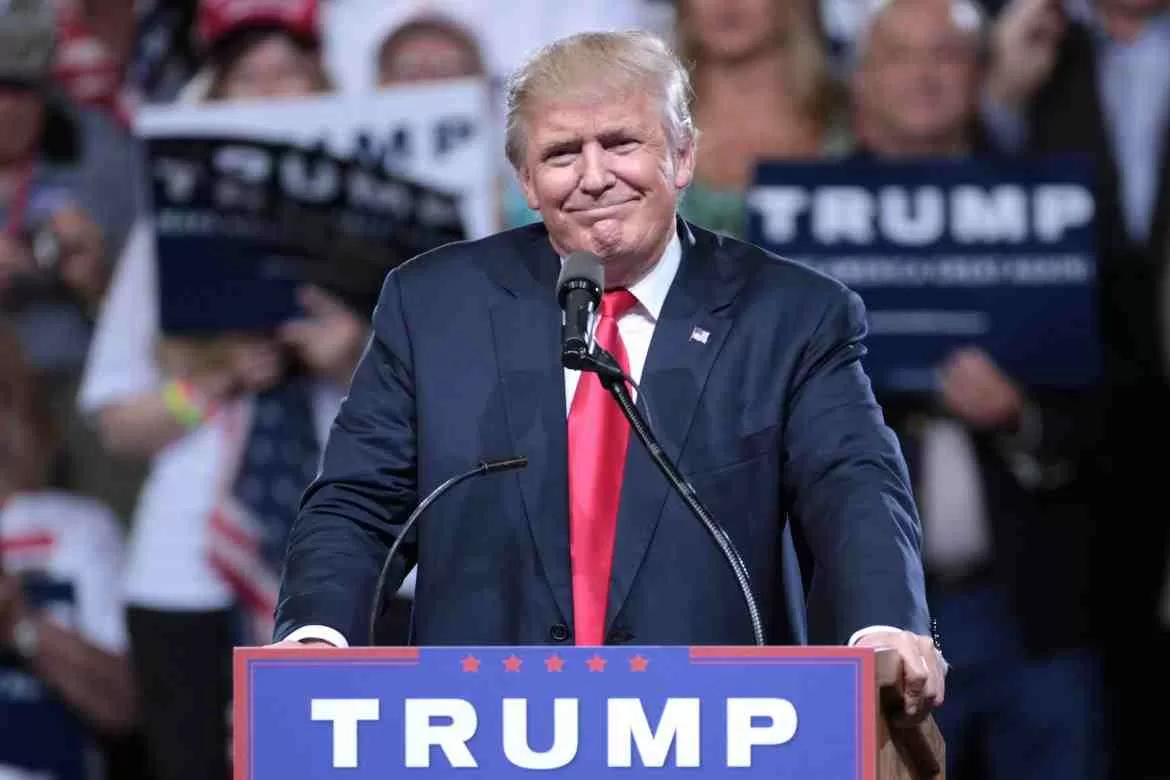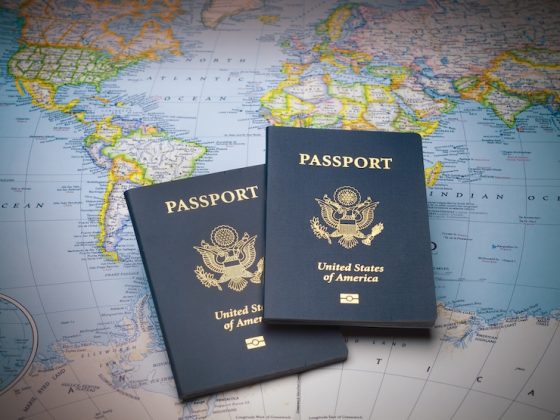The Trump administration has hit the ground running. It has only been five weeks since Mr. Trump raised his right hand and became the 45th President of the United States, and in that short time frame he has wasted no time in delivering on some of his campaign promises. Since taking office, Mr. Trump has issued a series of executive orders covering a wide range of issues, such as: targeting the Affordable Care Act, reviving construction of the Keystone XL and Dakota Access pipelines, beginning construction of a wall along the U.S. southern border, and enacting sweeping new measures regarding immigrants and refugees (though some of these have since been held up in court).
While hundreds of thousands have taken to the streets in protest of these actions, as well as a Trump presidency in general, the business community seems to have readily embraced him. Even some of those who were once highly critical of Mr. Trump during the campaign have made an about-face. Elon Musk of Tesla Inc., for example, has joined Mr. Trump’s economic advisory council after publicly criticizing then candidate Trump in 2016. It has been reported that Mr. Trump has either personally met with, or recruited onto his team, the leaders of U.S. firms with a collective market value of $5 trillion. Markets have also responded favorably to the prospect of a Trump presidency, with the S&P 500 index climbing well over 6% since the election and the Dow just yesterday crossed 20,800.
This should not come as a surprise. Mr. Trump has long promised to make U.S. investment more attractive by lowering the cost of repatriating foreign profits, cutting corporate tax rates, gutting regulation, and investing heavily in American infrastructure. While these policies have many in the business community excited, one major point of contention is still a cause for unease: trade.
Trade War Games
Mr. Trump won the U.S. election on a largely populist, protectionist platform regarding trade and has promised to bring lost manufacturing jobs back to the U.S. While critical of global trade in general, he set his focus on two countries in particular: Mexico and China. Specifically, he has promised to employ a tariff on American companies manufacturing abroad and selling domestically, vowed to renegotiate or withdraw from the North American Free Trade Agreement (NAFTA), threatened the implementation of a 20% tariff on Mexican imports to pay for his signature border wall, recommended a 45% blanket tariff on Chinese exports, and has already scrapped U.S. participation in the Trans-Pacific Partnership (TPP).
The realization of these policies could have a drastic effect on the Mexican economy, which is largely dependent on U.S. exports that comprise roughly 25% of its gross domestic product (GDP). The renegotiation of NAFTA was one of Mr. Trump’s more clearly and frequently expressed policy prescriptions. Enacted in 1994, NAFTA virtually eliminated border taxes on goods flowing between the U.S., Mexico, and Canada. As manufacturing chased cheaper labor, many American-based plants fled across the border in pursuit of comparative advantages in the Mexican labor market. These policies could deliver a serious blow to the foreign direct investment (FDI) that the Mexican economy is dependent on, given that the U.S. contributed roughly 53% of the $28.4 billion in FDI Mexico received in 2015. Last month Ford Motor Co. scrapped plans to build a $1.6 billion plant in Mexico after the company received harsh criticism from Mr. Trump for sending jobs south of the border.
While bringing manufacturing jobs from Mexico back to the U.S. might seem like a win to many Americans, protectionist measures such as these rarely go over well for either side. While the U.S. has relatively less to lose in a trade war with Mexico, Mexico is not going to allow this to occur without imposing retaliatory measures of its own that could deal some serious damage to the U.S. economy. Since NAFTA’s implementation, the interconnectivity between the U.S. and Mexico has increased exponentially, resulting in a complex web of supply chains and trade that runs across the border. Mexico is the U.S.’s third largest goods trading partner, with $531 billion in two-way good trading taking place between the two countries in 2015, of which $235.7 billion in U.S. goods were exported. An increase in the price of Mexican goods coupled with the disruption of supply chains could easily make U.S. manufacturing less competitive and send border states dependent on Mexican-American trade into recession. Needless to say, both countries would have a lot at stake in the event of a trade war and pain would be felt on both sides of the border.
Though Mr. Trump has toned down his rhetoric since officially taking office, one of his favorite targets on the campaign trail was China. Mr. Trump has fervently promised to take a strong stand against China, who he has accused of unfair trade practices, including currency manipulation and intellectual property theft, and threatened the imposition of a 45% tariff on Chinese imports if such practices did not stop* (FOOTNOTE: It should be noted that while China has in fact manipulated its currency for years in order to boost exports, over the past 18 months Chinese monetary authorities have been doing just about everything to prevent any further depreciation of yuan). Since China joined the World Trade Organization (WTO) in 2001, the U.S. trade deficit with it has exploded at the same time that millions of American manufacturing jobs disappeared overseas. China is the U.S.’s largest goods trading partner, grossing $598 billion in total two-way goods traded for in 2015, of which the U.S. imported a staggering $484 billion from China.
While it is improbable that an all-out trade war between the two countries will take place overnight, the likelihood of targeted tariffs snowballing into a larger conflict is very real. U.S. products that face stiff competition from Chinese imports, such as steel, machinery, and auto parts, would be likely targets for initial punitive action by Mr. Trump. China would likely respond in kind by targeting key U.S. exports to China, namely airplanes, soybeans, and automobiles. Mr. Trump may then impose blanket tariffs as an additional measure.
Experts differ on who would emerge victorious in the event of a trade war between the two economic superpowers, but almost all agree no one would survive unscathed. The Chinese domestic consumer market is still relatively premature, though it has significant future potential that the U.S. would not want to be shut out of, and the economy is largely dependent on exports, particularly to the U.S. The entire rationale behind implementing a policy like this would be to induce manufacturing jobs to return to the U.S., which could occur if Chinese imports are offset by growths in domestic production, instead of shifting to another cheap labor market. However, China is far from defenseless. A reciprocal blanket tariff would hit companies like Walmart particularly hard, which import billions in cheap goods from China, thereby raising prices for many U.S. consumers residing largely in lower economic brackets. China could also cause major disruptions of U.S. supply chains that companies like Apple depend on. Finally, China is the second-largest foreign holder of U.S. debt, possessing over $1.155 trillion in U.S. treasury bonds, which could be sold off in bulk at a loss in an effort to undermine their value. This would result in substantial repercussions for the entire global economy.
We have been here before, and the results were not favorable to anyone. When President Obama first took office in 2009, he levied a 35% tariff on imported Chinese tires. While saving an estimated 1,200 tire jobs in the U.S. and increasing U.S. tire production after a steep decline, the price of tires increased and cost American consumers an additional $1.1 billion, resulting in the loss of an estimated 3,700 retail jobs. Furthermore, the Chinese responded by imposing retaliatory tariffs of their own on U.S. chicken meat and automotive parts, costing U.S. chicken producers an estimated $1 billion in sales.
International law provides some constraints on what Mr. Trump could do without suffering serious economic repercussions from other markets. Under WTO rules the U.S. would have to develop cases industry-by-industry, illustrating that unfair Chinese trade practices are damaging American rivals. Again, this is something that has been tried by the previous administration. Despite Mr. Trump’s claim that his predecessor, Mr. Obama, was not tough on China, the Obama administration challenged Chinese trade practices in the WTO 16 times on a plethora of issues. However, the WTO is a slow bureaucratic process that suffers from a back load of cases and lack of adequate resources, essentially it is a fragile and slow process. If Mr. Trump were to grow impatient and act outside of the WTO framework, the preferred trading status of “most favored nation” could be revoked in 163 countries, significantly damaging U.S. trade and threatening the collapse of the current global trading system.
A more protectionist America could have major implications for economic growth in developing countries. Last month at the World Economic Forum in Davos, Switzerland, leaders from across the developing world gave speech after speech praising free trade and condemning the mounting trend towards protectionism in the West. They fear the reversal of globalization trends that flooded developing markets with Western capital, bringing with it jobs and growth. Small open economies deeply integrated in global supply chains and dependent on export-led growth, like South Korea and Taiwan, could be hit particularly hard by the loss of foreign investment. In some Southeast Asian countries, global exports can amount to a staggering 45% of GDP. Alex Dryden, global market strategist at JP Morgan Asset Management, has claimed that South Korea and Taiwan derive 38% and 55% of their GDP from exports, respectively. The disruption of global supply chains could also result in across-the-board price increases that would put further strain on developing countries.
Conversely, if a trade war were to occur between the U.S. and China, it could present new investment opportunities to make up for the diminished demand for Chinese and U.S. goods in their respective markets. Argentina and Brazil’s soybean industry, for example, could become a lucrative investment if China were to target U.S. soybeans with a tariff. The disruption of trade between China and the U.S. could present attractive investment opportunities in some developing markets that could replace Chinese imports into the U.S., as well as accelerate the current manufacturing growth in countries like India, Indonesia, or Vietnam. Same goes for U.S.-Mexico relations, as almost all Mexican cotton and yarn imports are from the U.S.
A New World Order?
The type of protectionist policies advocated by Mr. Trump run in stark contrast to the U.S.’s historic role as chief advocate for a liberalized, global trading system. For the past half-century, the U.S. has been the undisputed leader of the international economic system, but if Mr. Trump were to follow through on some of his protectionist plans, that role could be seriously diminished, if not forfeited. A weakening of U.S. free-trade policy and a reduced global leadership role could place the entire global economic system in peril and pave the way for China to take a more active role in structuring global institutions in a manner that would suit their interests and likely downplay Western values such as democracy and freedom of expression.
The abandonment of the TPP has significant implications on the current global trade regime, as well as the geopolitical power structure in the Western Pacific. Looking past the plethora of issues and controversies that surround the TPP, it was largely a calculated effort to “pivot” U.S. interest in the east and strengthen U.S. ties to countries in an area immersed within the Chinese geopolitical sphere of influence, acting as a buffer against Chinese interest in the region. The agreement, of which China was omitted, attempted to outline the framework for trade between the U.S. and 11 other pacific countries, which would have comprised roughly 40% of global GDP, and attempted to normalize other non-trade measures, such as environmental and labor standards. It was hoped that China would eventually become a signer, thereby entering into an institutional framework under terms written by the U.S.
In the wake of a growing anti-globalization sentiment in the U.S., and the death of the TPP, a leadership vacuum has emerged that China is eager to exploit. While hardly the poster child for liberal trade, China has sought to portray itself as a champion of globalization and an emerging leader within the global economic system. Talks are already underway on a new multilateral trade agreement spearheaded by China, the Regional Comprehensive Economic Partnership (RCEP). The RCEP includes many of the would have been TPP signatories while excluding the U.S., encompassing roughly 30% of global GDP and diminishing U.S. influence in the area. During his speech at the World Economic Forum last month, Chinese President Xi Jinping praised global economic cooperation and condemned acts of protectionism, likening such behavior to “locking oneself in a dark room.” Similarly, in 2015, Beijing founded the multilateral Asian Infrastructure Investment Bank (AIIB) in order to establish the foundation needed to reinvigorate ancient trade routes into the Middle East and Europe. While the U.S. has been hostile to the organization, seeing it as a direct challenge to already established multinational organizations such as the World Bank, the AIIB currently consists of over 50 member nations and has more than 20 prospective applicants from countries throughout Africa, Europe, and even North America. From 2000 to 2013, bilateral trade between China and Latin American countries grew 2,400% and China has no plans on stopping anytime soon.
Whether Mr. Trump actually wants, or is able, to follow through on his trade proposals still remains to be seen. It could be argued that the tough talk exhibited by Mr. Trump should not be taken as serious policy plans, instead it should be viewed as a negotiation tactic intended to elicit concessions from other countries during future talks, or that such rhetoric is merely political fodder for a disgruntled American electorate. While Trump’s reputation as a hardball negotiator fits into this narrative, the consistency with which he has attacked free trade since the 1980s, as well as the people he has placed in top trade positions indicates a desire to take U.S. trade policy in a drastic new direction. Regarding trade positions within his administration, Mr. Trump has tapped Robert Lighthizer, a longtime free trade skeptic who has advocated for the use of tariffs on imports from global competitors, and Peter Navarro, an outspoken critic of China and author of the book and documentary Death by China, as U.S. Trade Representative and head of the new National Trade Council, respectively.
But wanting and getting something is quite different in the realm of public policy, and the U.S. is a system of checks and balances, so the President could not act without congressional approval on a matter as important as this, right? Passing any meaningful, substantive legislation through both houses of Congress and codifying it into law has proven particularly painstakingly difficult over the past several years. Given the enormous, and potentially detrimental, impact these policies would have on the U.S. economy and global trade regime, I believe it is safe to assume that the passage of protectionist trade legislation is unlikely, though far from impossible. However, over the course of the past several decades, Congress has delegated an enormous amount of power to the executive branch to act unilaterally regarding trade, particularly in a state of “national emergency” or during times of war. Furthermore, the Trade Act of 1974 allows the President to impose blanket quotas or tariffs of up to 15% for 150 days against countries with large balance-of-payments surpluses. Finally, while signing onto a trade agreement requires Congressional consent, leaving one does not. If he wanted to, Mr. Trump could end U.S. participation in NAFTA or the WTO with a mere letter indicating intent to withdraw and 6-month notice.
Conclusion
The world is changing at an increasingly fast pace, and the global order will have to adapt or be destroyed and replaced. The election of Mr. Trump, passage of the Brexit referendum, and rising popularity of nationalistic parties throughout Western Europe (such as France’s National Front lead by Marine Le Pen and the Netherlands’ Party for Freedom headed by Geert Wilders) are indicative of a mounting sense of resentment and insecurity many are feeling towards liberalism in the West. The stable, good paying manufacturing jobs that supported many middle-class families have gone overseas in search of cheap labor. Of the middle-class jobs that remain, wages have been stagnant while an increasing amount of wealth is accumulated by those at the very top. Grievances about employment and equality are deserving of greater focus and resources, however the solution to these problems is not going to be found through nationalism, isolationism, and the erection of trade barriers. Unfortunately, many of the jobs Mr. Trump’s policies attempt to bring back are never actually coming back, and even if they do it will likely increase the price of production which will result in the loss of jobs in other sectors, as well as their inevitable elimination via automation. What the U.S. and other developed countries should be focusing on is better equipping its labor force to adapt to the ever changing demands of a 21st-century labor market.
Despite what Mr. Trump and other protectionists may think, trade is not an adversarial zero-sum game. America is not losing, it is changing. Like everything in life, there are tradeoffs. The liberalization of trade restrictions results in the greatest capitalization of comparative advantages around the world, reducing prices, increasing consumer options, and weeding out inefficiencies from the market. The exodus of manufacturing from the U.S. has resulted in the lowering of prices, which has made many better off. While understandably frustrated at the loss of steady employment, impeding productivity by dragging back manufacturing jobs that can be done more efficiently elsewhere is not a viable long-term solution. Growth is rarely symmetrical, but that is where the government should step in to smooth the transition and prepare employees for a 21st-century labor market.
While far from perfect and in need of constant scrutiny, the liberalization of trade that has taken place over the past half-century has resulted in the greatest increases to the average standard of living ever. While manufacturing jobs in the West have gone overseas, economic growth arising from FDI in developing countries has resulted in a steep decline in the economic inequality between countries. For instance, the United Nation’s Millennium Development Goal of halving poverty by 2015 was met in 2010.
While the West is certainly experiencing some growing pains that make politicians promising to bring back the jobs of a bygone era appealing, it is simply not going to happen without significant costs that outweigh any benefit. It is only a matter of time until automation renders many of these jobs obsolete anyway. Implementing protectionist tariffs carries with it a significant risk of backfiring on the country imposing them by raising prices, removing consumer choices, dampening competition, and hindering growth.
Right now, only time will tell what the Trump administration and other countries looking increasingly inward will do regarding global trade. If Mr. Trump’s first three weeks in office are any indication, there is a strong likelihood he will try and make good on his campaign promises. If so, by putting “America First,” Mr. Trump runs the risk of inhibiting growth and forfeiting America’s ability to shape the global infrastructure.
Contact Author
"*" indicates required fields
Stay Ahead on Every Adventure!
Stay updated with the World News on Escape Artist. Get all the travel news, international destinations, expat living, moving abroad, Lifestyle Tips, and digital nomad opportunities. Your next journey starts here—don’t miss a moment! Subscribe Now!










